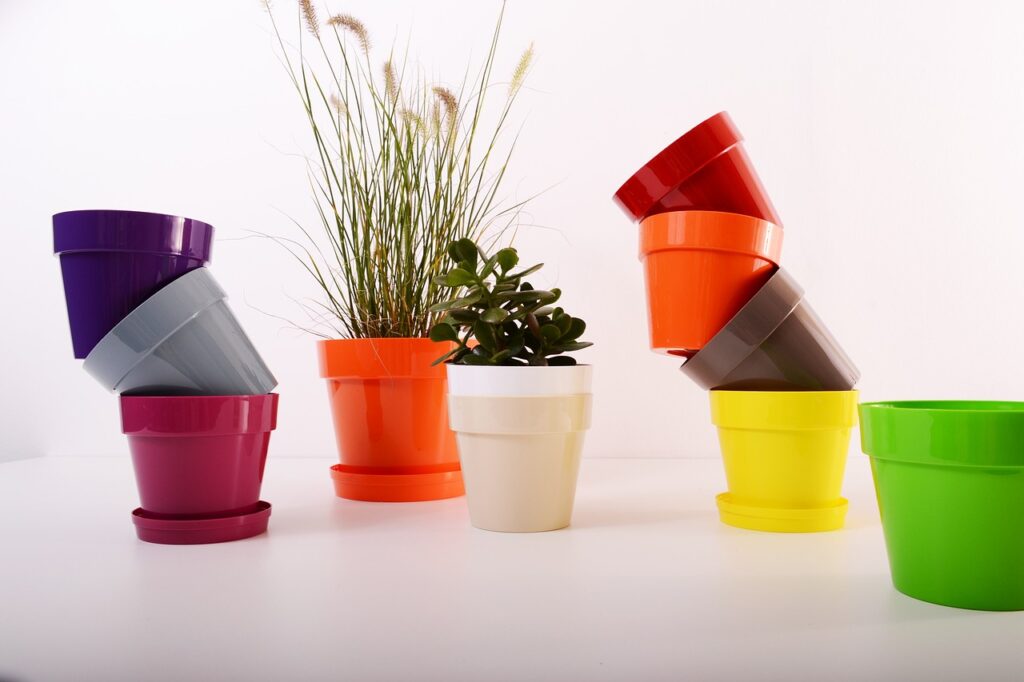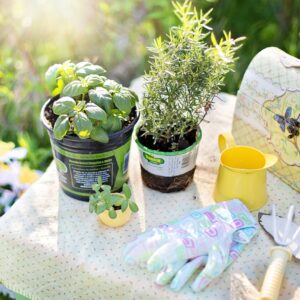
Container gardening is a versatile and convenient way to create a thriving garden, especially for those with limited space or no access to a traditional garden bed. Here are detailed steps to help you create a thriving garden in container gardening:
- Select the Right Containers: Choose containers that are suitable for the plants you want to grow. Consider factors like size, material (such as plastic, terracotta, or fabric), drainage holes, and aesthetics. Ensure the containers are clean and have adequate drainage to prevent waterlogging.
- Choose the Right Potting Mix: Use a high-quality potting mix specifically formulated for container gardening. Avoid using garden soil, as it may not provide adequate drainage or nutrition. The potting mix should be lightweight, well-draining, and rich in organic matter.
- Determine Planting Location: Place your containers in a location that receives the appropriate amount of sunlight for the plants you want to grow. Most vegetables and flowering plants require at least six hours of direct sunlight per day. Consider factors like wind exposure and proximity to water sources for ease of maintenance.
- Select Suitable Plants: Choose plants that are suitable for container gardening. Consider the size of the container, growth habit, and the specific requirements of the plant, such as sunlight, temperature, and water needs. Herbs, salad greens, dwarf varieties of vegetables, and flowers like marigolds and petunias are great options for containers.
- Planting Techniques: Fill the containers with potting mix, leaving enough space at the top for watering. Gently loosen the plant’s root ball and place it in the container, ensuring it is at the same depth as it was in the original pot. Fill any gaps with potting mix, firming it gently around the plant. Water thoroughly after planting.
- Watering: Container plants generally require more frequent watering than plants in the ground. Monitor the moisture level by sticking your finger about an inch into the soil. Water when the top inch of soil feels dry. Ensure thorough watering until water drains out of the container’s drainage holes, but avoid overwatering, which can lead to root rot.
- Fertilizing: Container plants need regular fertilization to thrive. Use organic fertilizers specifically formulated for container gardening or slow-release fertilizers according to the package instructions. Apply fertilizers at regular intervals to provide essential nutrients for healthy growth.
- Pruning and Maintenance: Regularly inspect your container plants for pruning needs. Pinch back leggy stems, remove dead or yellowing leaves, and trim off spent flowers to encourage continuous blooming. This helps maintain the plant’s shape, improves air circulation, and reduces the risk of pests and diseases.
- Mulching: Apply a layer of organic mulch, such as straw or wood chips, on the surface of the container’s soil. Mulching helps conserve moisture, regulate soil temperature, suppress weeds, and improve the overall health of the plants.
- Pest and Disease Management: Inspect your container plants regularly for signs of pests or diseases. Promptly address any issues by using organic pest control methods like handpicking pests, using insecticidal soap or neem oil, or introducing beneficial insects. Proper spacing, good airflow, and regular maintenance practices can help prevent common plant diseases.
- Regular Harvesting: Regularly harvest herbs, vegetables, or fruits when they reach maturity. This promotes continuous growth and encourages the development of new blooms or fruits.
- Rotate and Refresh: Rotate your container plants’ positions periodically to ensure all sides receive adequate sunlight. Refresh the potting mix every year or two to replenish nutrients and improve soil structure.
- Winter Care: In cold climates, protect your container plants during winter by moving them to a sheltered location or insulating them with horticultural fleece or mulch. Water sparingly during the dormant period.
By following these detailed steps, you can create a thriving garden in container gardening and enjoy the benefits of fresh herbs, vegetables, or flowers, even in limited spaces. Remember to adjust your care routine based on the specific needs of your plants and enjoy the beauty and productivity of your container garden.




